Artemis Wayfinder
Summer 2020 remote design intern project for the NASA Soft Goods Lab, Johnson Space Center (JSC).
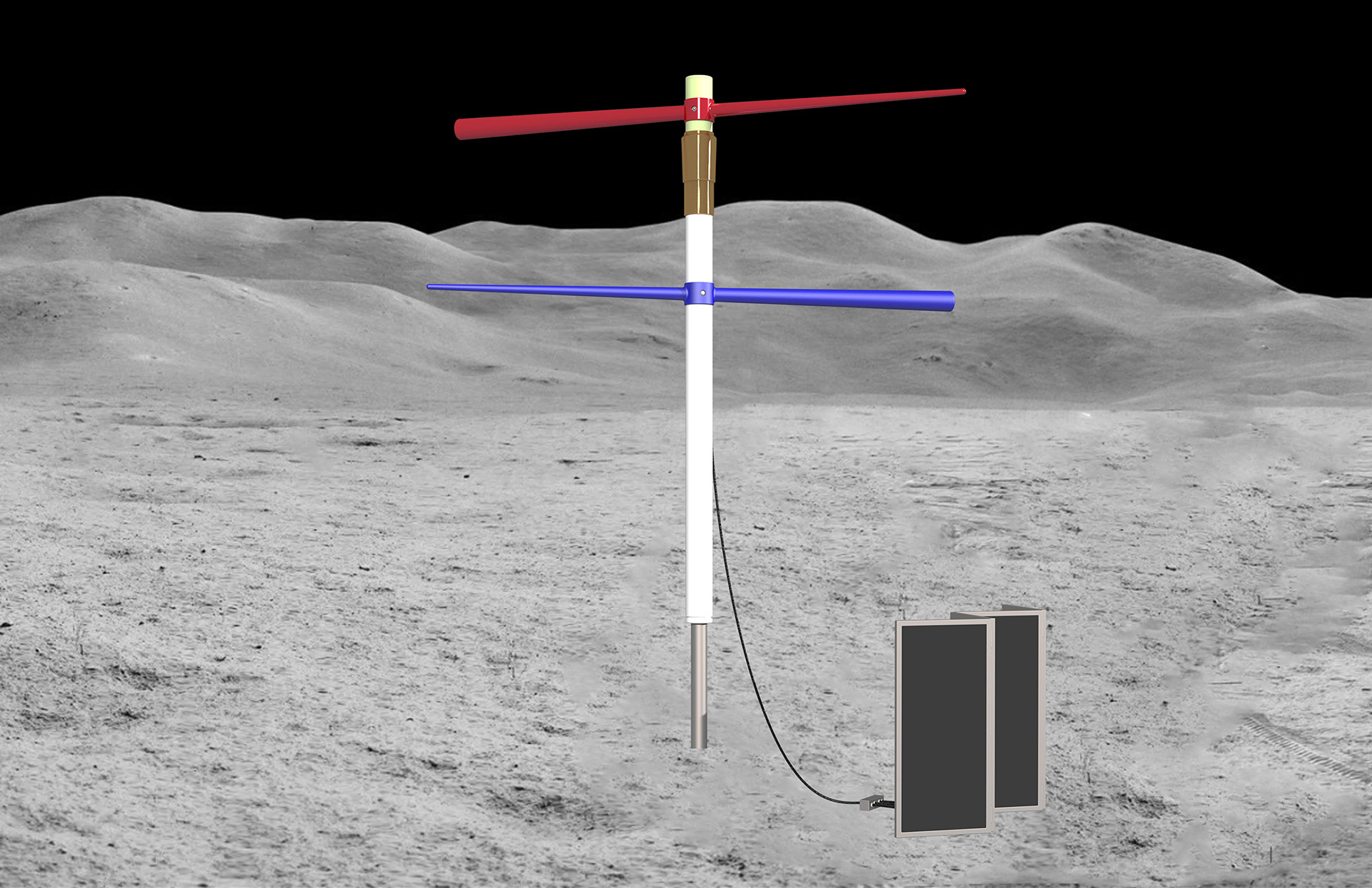
Rendering of the Artemis Wayfinder
The Artemis Wayfinder was an object that was designed to have the same visual and symbolic impact as the placement of the United States Flag on the Moon by the Apollo astronauts, but also serve as a means of distinguishing the Artemis Missions from these past explorations.
My research and final design were presented to the NASA Soft Goods Lab and NASA contractors working at the NASA Center for Design and Space Architecture.
To support my research I was awarded the Rhode Island Space Grant.
Throughout the course of my internship I devised and worked on 3 independent projects--the Artemis Wayfinder, Microgravity Footwear and The Artemis Collection.
The Challenge
"Signalize [sic] the first lunar landing as an historic forward step of all mankind that has been accomplished by the United States"
- Acting NASA Administrator (1969-1970), Thomas O. Paine
![]() Buzz Aldrin salutes USA flag during Apollo 11
Buzz Aldrin salutes USA flag during Apollo 11
As preparations are made to return to the moon within the next decade we must revisit the question of how we want to immortalize this event.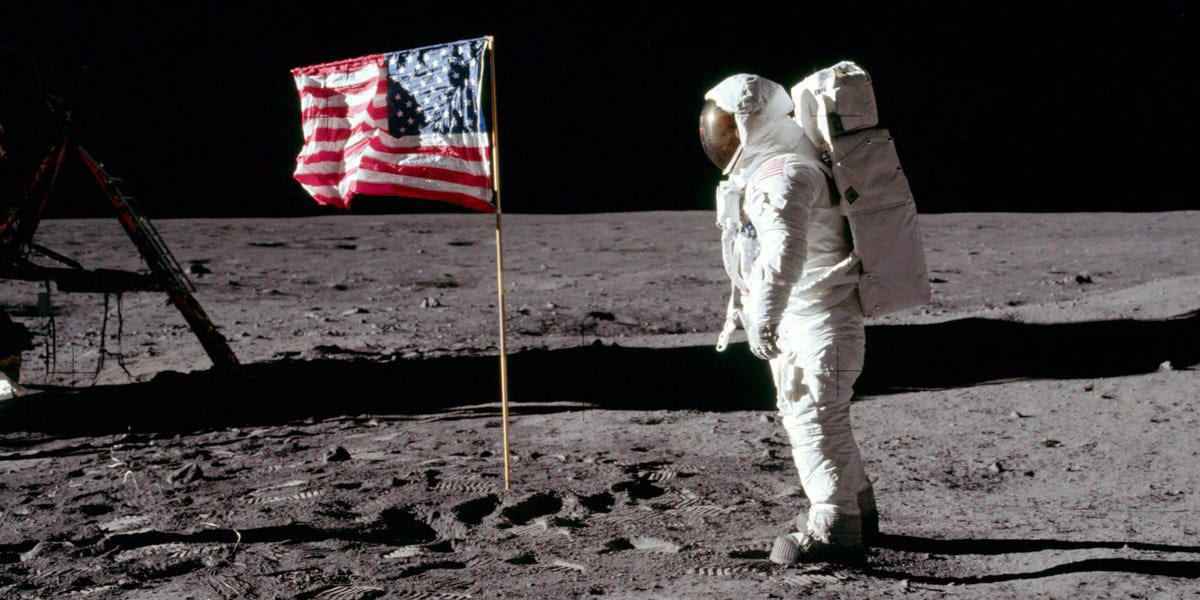 Buzz Aldrin salutes USA flag during Apollo 11
Buzz Aldrin salutes USA flag during Apollo 11The Apollo missions celebrated by placing United States flags on the moon.The goal of this project was to design an object that would have a similar impact but would symbolically highlight the differences between the first lunar missions and the new Artemis mission. The new object must also not interfere with mission procedures and be as light and easy to assemble as possible.
Based on this prompt the following design criteria was developed:
1. Symbolically indicate the significance of the Artemis mission.
2. Minimal mass and storage space.
3. Easy to assemble.
Research and Concept Generation
“With the Artemis program, NASA will land the first woman and next man on the Moon by 2024, using innovative technologies to explore more of the lunar surface than ever before...Then, we will use what we learn on and around the Moon to take the next giant leap – sending astronauts to Mars.”
- NASA Artemis Mission Statement.
1. It will land the first woman on the moon.
2. The knowledge gained from the Artemis missions will be used to travel to Mars.
To celebrate the first woman landing on the moon I decided to reference Artemis, Greek goddess of the hunt and namesake of the mission.
To remind of the eventual goal to travel to Mars, I decided to utilize the natural resources of the moon to create kinetic motion as gesture towards how space agencies hope to use the resources of the Moon to travel to Mars and beyond.
To understand the mechanical and material requirements I researched the Apollo flags and consulted with NASA mission architecture experts.


Selected sketches of idea generation
![]() Artemis Wayfinder final concept rendering.
Artemis Wayfinder final concept rendering.
The concept I proposed was an object that continuously points to Mars and the Earth, a simple dynamic gesture that serves to remind us of where we hope to go and where we will eventually return.Final Concept
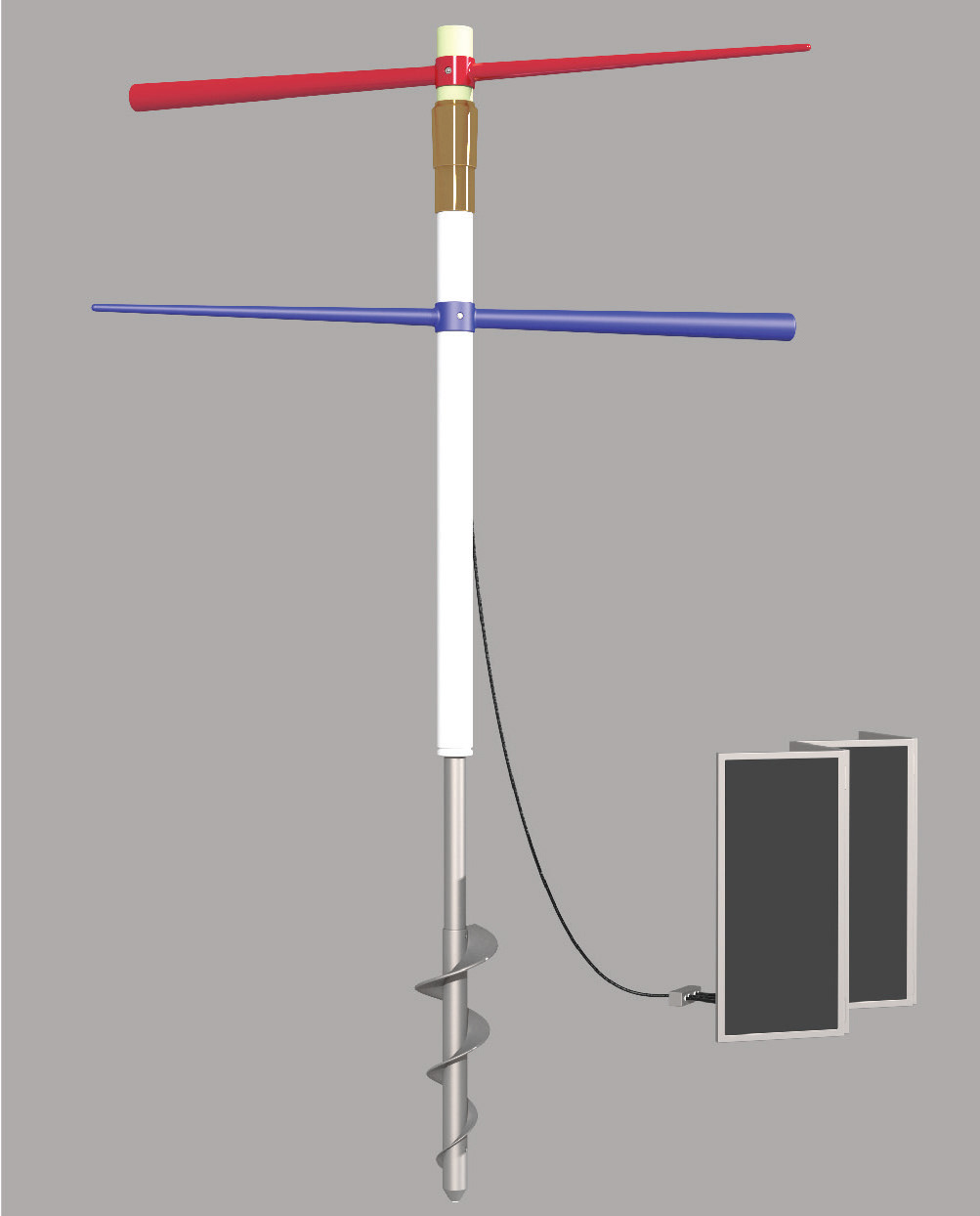
The "pointers" on the structure are abstracted arrows, a reference to Artemis's weapon of choice. The red arrow continuously spins on a calculated path that points it towards Mars. The blue arrow is fixed in place and positioned so that, utilizing the synchronized lunar-earth orbit and axial rotation, it always points towards Earth. The structure is powered by solar energy, which is an abundant resource at the lunar south pole, the current landing site of the Artemis Missions.
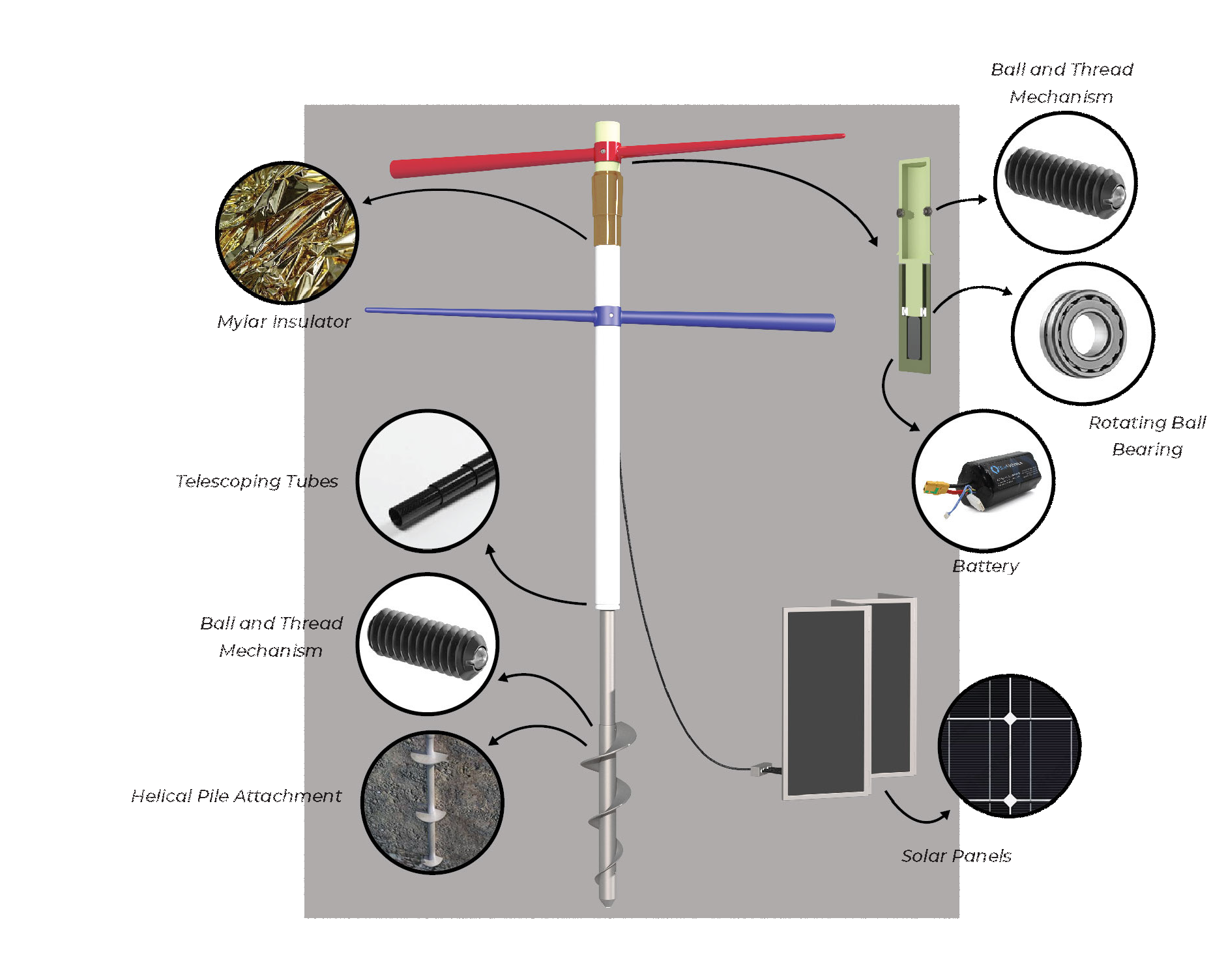 Artemis Wayfinder technical break-out diagram
Artemis Wayfinder technical break-out diagram1. The center pole is a telescoping tube, allowing for compact storage during transition.
2. The arrows are detachable and are secured in place by a ball and thread mechanism. They are the same size as the retracted pole.
3. The electrical and mechanical components of the rotating upper component where the Mars arrow is placed are protected by a heat shield.
4. The helical pile attachment enables the astronauts to effectively insert the pole deep into the ground, an issue the Apollo astronauts faced with the flags.
5. The compact, folding solar panels that power the structure are attached prior to mission launch.
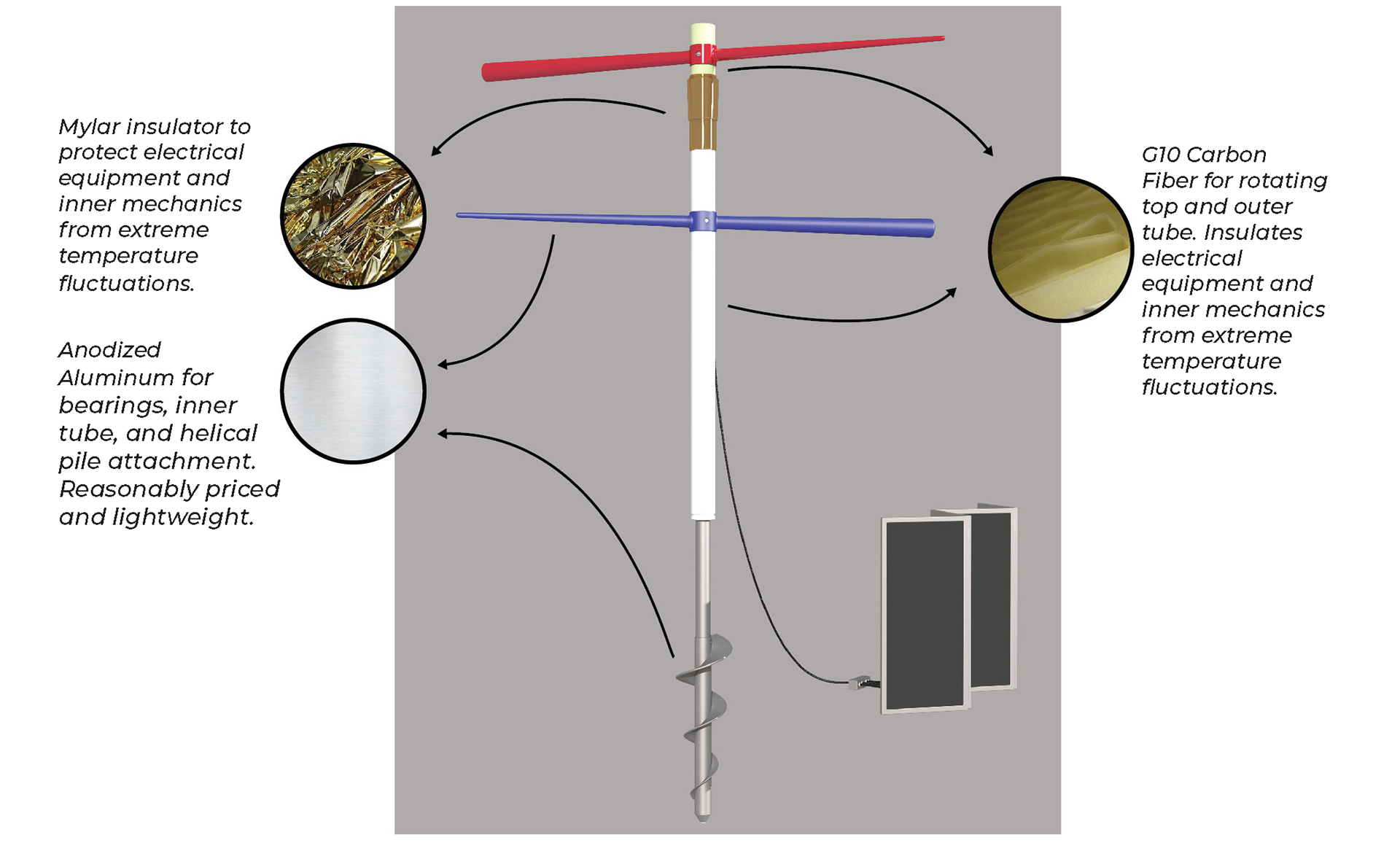
Artemis Wayfinder material break-out diagram
![]() Assembly diagram for the Artemis Wayfinder
Assembly diagram for the Artemis Wayfinder
![]() Dimensions of the Artemis Wayfinder.
Dimensions of the Artemis Wayfinder.
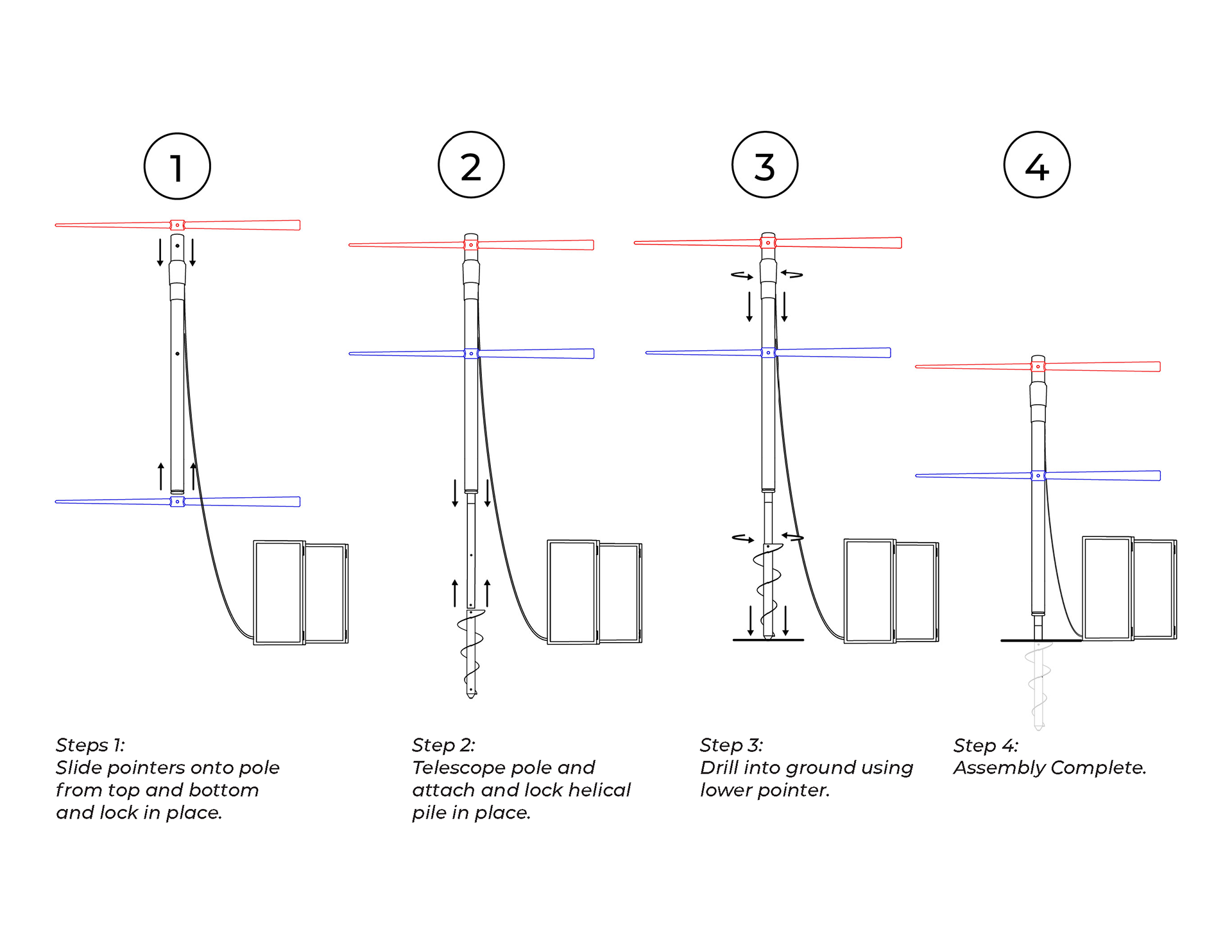 Assembly diagram for the Artemis Wayfinder
Assembly diagram for the Artemis Wayfinder
 Dimensions of the Artemis Wayfinder.
Dimensions of the Artemis Wayfinder.
The last component of this project was the storage system for the Artemis Wayfinder. The container I proposed is fabric and can be rolled up. Inside are specific compartments for each component. The compartments are sealed by Velcro and are opened with the assistance of long handles that are easy for the astronauts to grab even when wearing a spacesuit.
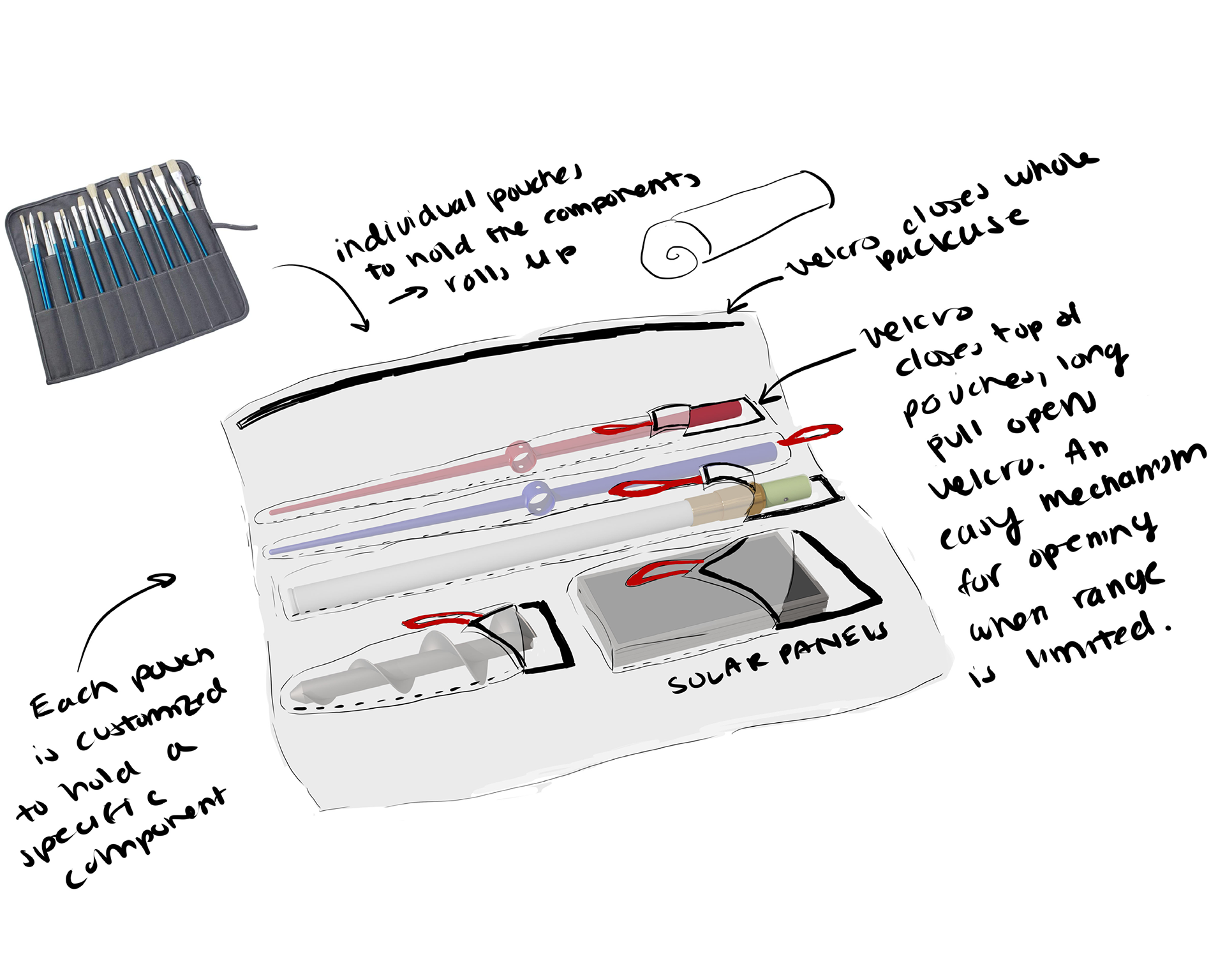
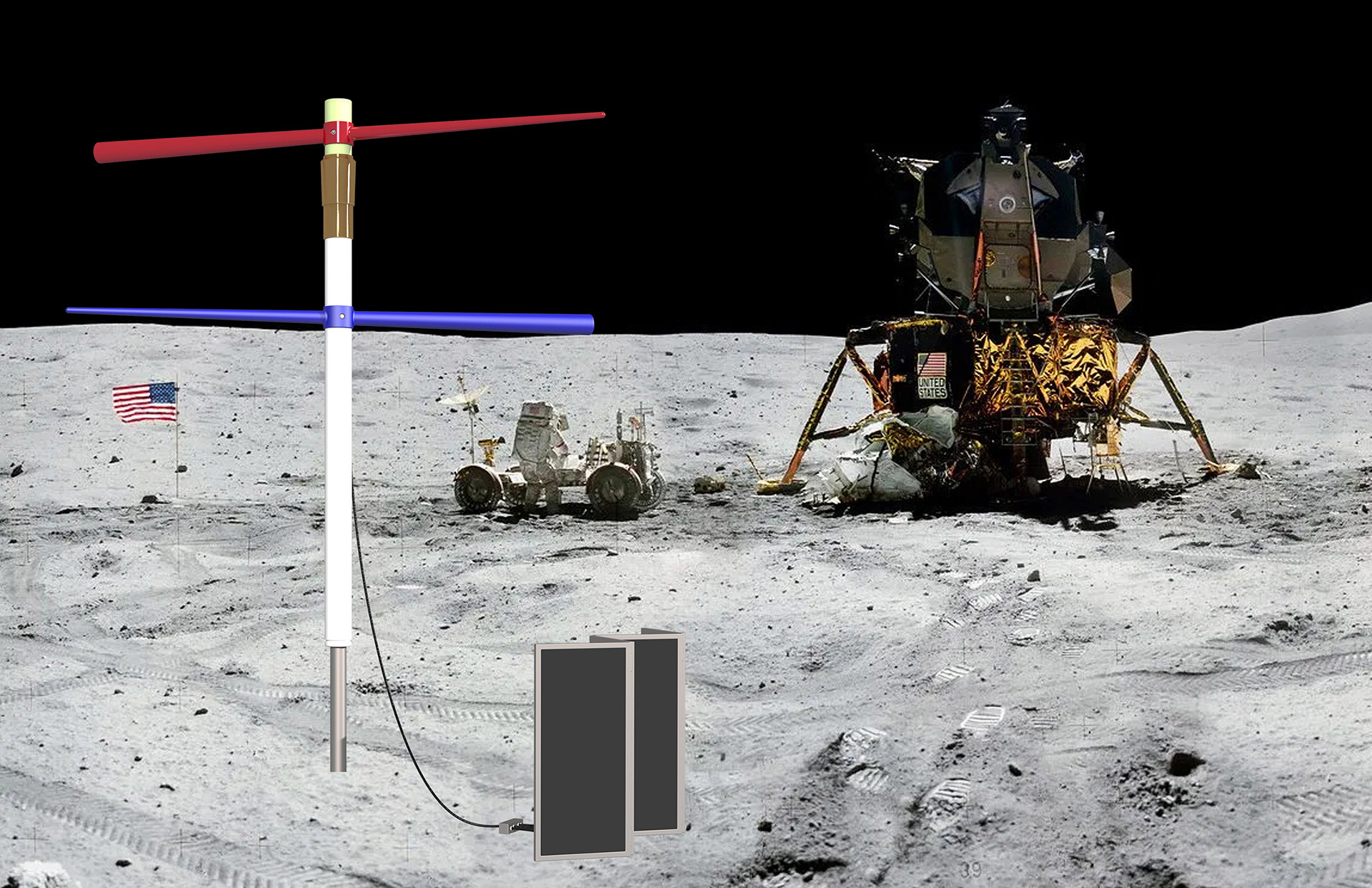
Rendering of the Artemis Wayfinder on the lunar surface